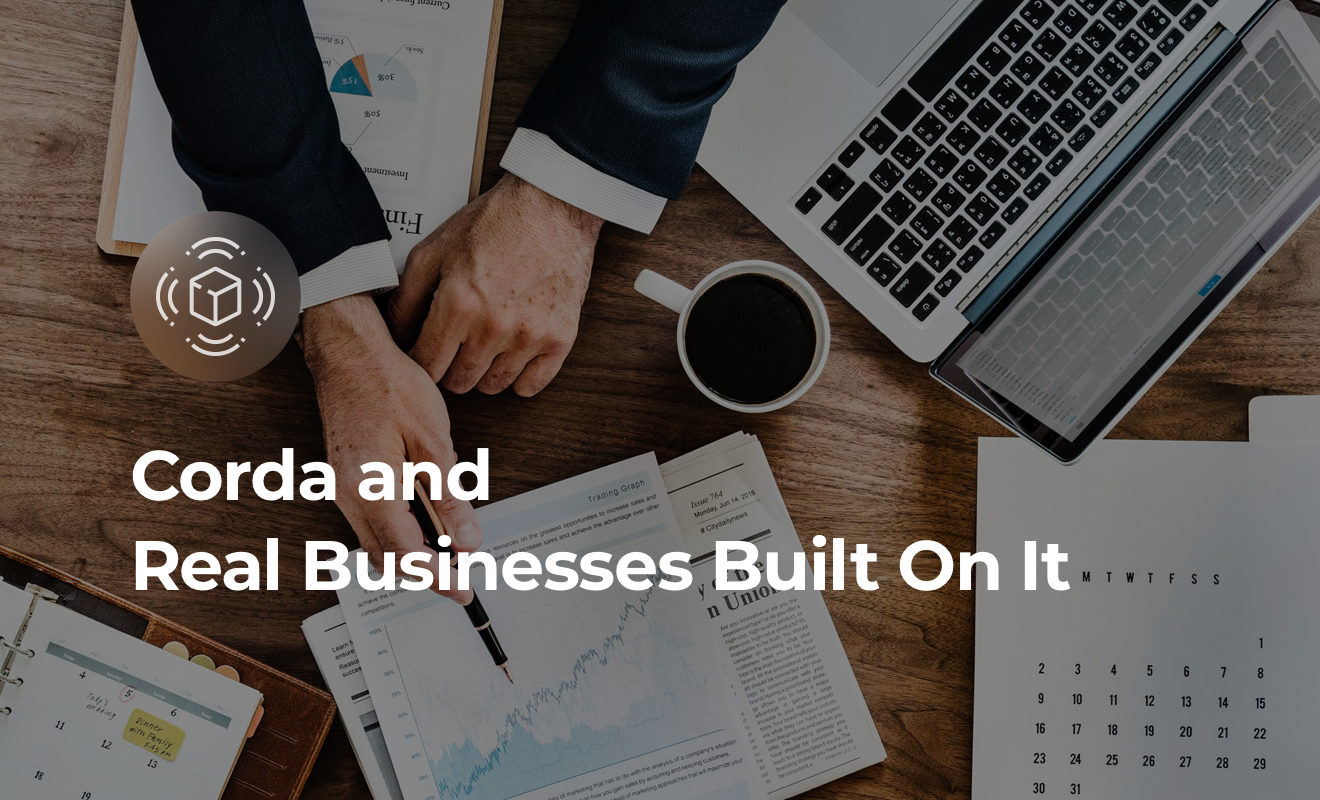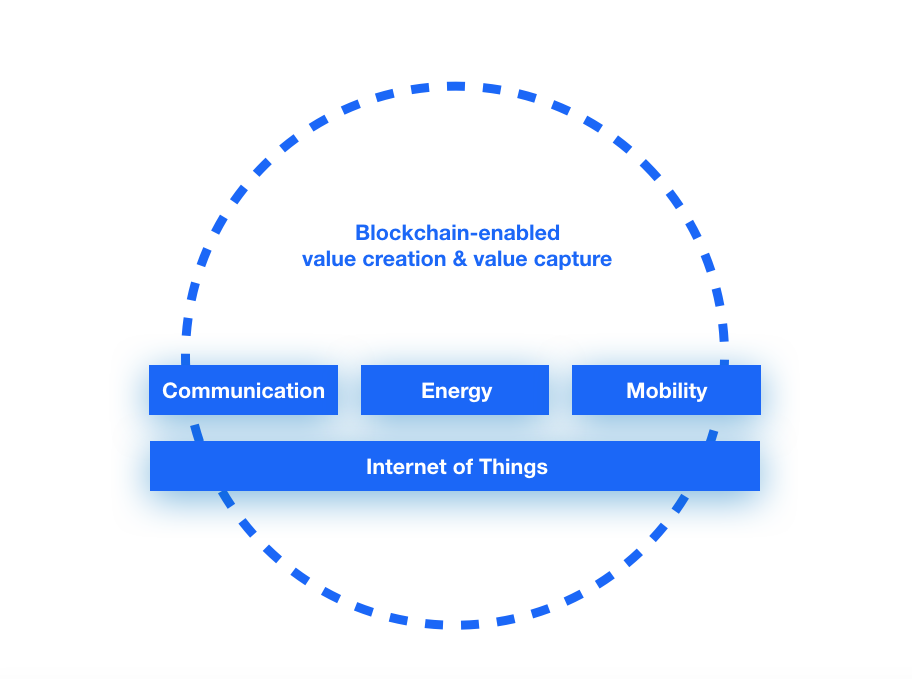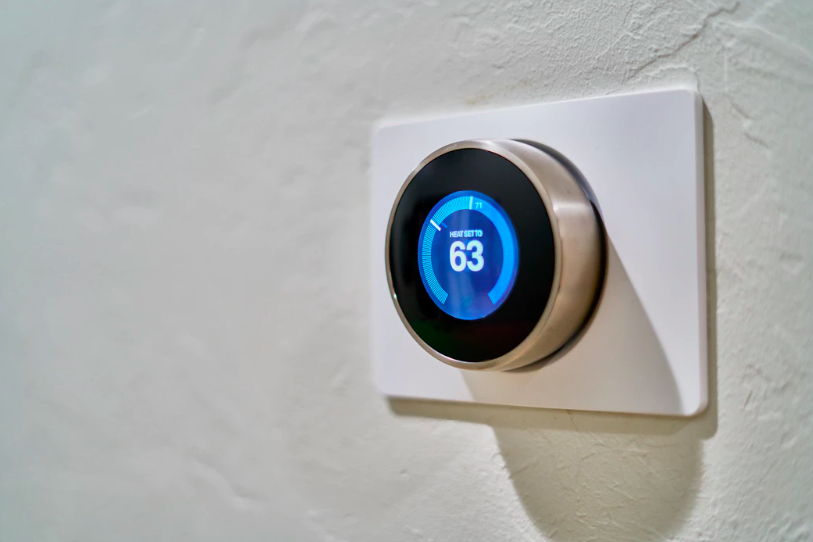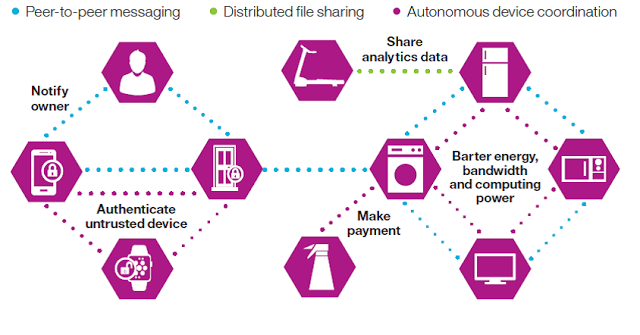
How the Consortium Blockchain Works
September 25, 2019
Corda and Real Businesses Built on Top of This Framework
August 23, 2019
IoT is an upcoming web for capturing all data possible worldwide. A blockchain is a novel tool for trustless accounting, be it money or data. Together they could make a miracle or, put more pragmatically, a new market worth half a trillion dollars by 2022.
Earlier we mentioned that governments and entire industries are transitioning to new forms of communication, energy, and transportation. They will operate on the Internet of Things infrastructure but how exactly will it happen? Instead of guessing, we invite you to review the current developments in the merged IoT and blockchain technologies.
Before we explore how the two technologies can merge and emanate the hidden potential, it is necessary to define each of them. The blockchain is a decentralized append-only database. IoT or the Internet of Things is an M2M (machine-to-machine) network that interconnects smart devices at home, in office, and outdoor and constantly gathers data in real time.
The blockchain acts as a borderless and precise ledger without a third party and a single point of failure. It frequently synchronizes to keep the true history of transactions without a need to be trusted. IoT refers to the 5G-enabled web of potentially billions of devices that will feed blockchains for different purposes such as manufacturing, logistics, indoor positioning, energy, and security.

The union of these two technologies would enable an increase in:
It is not a question of why but when since today’s infrastructure came from the 20th century and had reached its ceiling. As we reap the fruits of the second industrial revolution, the total US efficiency remained at 14%, the rate of 1990. Until recently, Germany’s aggregate efficiency was at 18.5%; in Japan — at 20%.
To enable the third industrial revolution, we need hundreds of specific solutions that range among various industries. This process is running, and the following is the review of some individual IoT and blockchain use cases.
Problem: How Can We Ensure The Origin And Quality Of Goods?
How it works: specialized sensors continuously collect and save timestamped data to prove the origin and quality of a product along its way. As a device records a certain condition such as temperature or moisture, this information is being broadcasted to the dedicated ledger where it can’t be altered.
Bottleneck: computing power of the microcontrollers; battery lifetime; low interest of the majority of suppliers (for now).
Business cases and Implementations:
A few years ago the wearables flooded the market as many companies introduced their smart appliances. When the interest cooled down, developers switched their focus from B2C to B2B segment to help cut the cost of logistics and ensure the safety of products delivered to our table.
Modum helps pharmaceutical companies save money on transporting medicines. Instead of running expensive special trucks, the system ensures that the transporting conditions were sufficient and lets customers comply with the EU regulations. By the way, the project won Digital Innovation of the Year award from the 2018 Swiss Digital Economy Awards.
AgriDigital, founded in 2015, facilitates supply chain management for farmers and storage operators in North America. It just has evolved from previous businesses, and the company just released its platform to U.S. and Canadian markets.
Daimler is in the emerging business: logistics in the new Internet. IOTA is currently developing its own solution on the crossing of the Internet of Things and distributed ledger, not the blockchain. Walmart committed to rolling out its blockchain-powered supply chain in September 2019.
Russia had adopted the legal framework for creating a unified Russian IT product labeling system. It will rely on a bar code, radio frequency tag (RFID) or other means of automatic identification to help verify the origin and characteristics of a product. The framework of a public-private partnership completed development in 2018, and the first rollout is planned for March 1, 2019.
While the above example aims to preserve the health of its citizens by tagging certified products, the Chinese Waltonchain has partnered with a few retailers to fight brand counterfeits. Internet of Things blockchain integration has a place for ethics too. For instance, Bext360 brings accountability to supply chains for coffee, seafood, timber, and cotton. It has partnered with Moyee Coffee, Great Lakes Coffee, and Coda Coffee, who have already used its services.
Problem: There Are Industries Where Integrity is a Vital Security Measure.
How it works: increment blockchain-enabled software in addition to IoT-ecosystem of your enterprise; eliminate the smallest possibility for an error and decrease inefficiencies. If a piece goes missing during the production or assembling phase, a program will notify employees and their management.
Bottleneck: computing power of the microcontrollers; price.
Business cases and Implementations:
Skeptics may argue that IoT/blockchain manufacturing is a fancy part of a sales pitch. Indeed, small manufacturers do not need it yet. However, consider large manufacturers and the Boeing case. When coordination risk unfolded, the management realized that details didn’t fit, and the company lost a lot of money.
Corporations are actively interested in blockchain for IoT. For many, it is the basis of their growth strategy. Take General Electric: it is collecting information from end devices and systems that they produce and deliver to the market. Thanks to smart IoT systems, it is possible to monitor the state of engines and turbines in real time and optimize their repair and maintenance. For Cisco, it is important to link a large number of different IoT devices to the network. They contribute to the demand for the company’s expensive solutions for creating complex IoT systems.
The same is true for strategic industries, including aerospace manufacturing. Boeing learned from its mistakes and currently is able to control and improve its operations with blockchain and the Internet of Things.

Problem: Inefficiencies Are Costly; What Can We Do?
How it works: sensors collect information and use it to access urban and/or global systems for paying utilities, ordering food, reporting leaks of energy, and supporting security. It is one more step toward freeing people’s time.
Bottleneck: price; network effect; safety; lack of standards.
Business cases and Implementations:
It may seem like a distant future, but smart homes are already a reality in the developed nations. The next step is combining the omnipresent network of sensors with the self-efficient blockchain-driven software.
It is not enough to hang sensors in the house and offer an all-in-one button — customers will need to learn how to use all of this. Or they can rely on an integrated management system, something that Alexa is already capable of doing. To achieve that, an IoT device must be cheap, accessible, safe, and unified. For example, even RFID systems, that are so commonly used in our daily life, have four different protocols now which is absolutely unnecessary.
Third-party intervention is unacceptable too, especially if the device is part of a large network. The IoT object itself such as a smart refrigerator, may not be the subject of attacks, but an attacker might use another element of the “smart home” to which it is connected.

When unification of IoT devices is achieved by blockchain. Credits: Datafloq
Moreover, a new type of organizations needs to emerge in cities, like a smart city operator. For example, to cut the cost of electricity, the entire city would need to install new energy-saving lights. The smart city operator will own and run the infrastructure required for the smart city. Then, computer systems will be capable of monitoring the cleanliness of the air, traffic, noise, electricity costs and other things to ensure a comfortable living for people.

Governments are eager to cooperate with various firms in this field: Ecoisme works with Dubai Electricity and Water Authority (DEWA) and IOTA partnered with Taiwan. All told, companies working on edge computing devices do not necessarily need to work on their own blockchain implementation. In future, there will be only one or two blockchain protocols to enable mass device communication, unified and autonomous. This leads us to distributed energy grids.
Problem: How Do We Capture, Store, and Equally Distribute Resources?
How it works: little power stations for generating various energies installed across the continent; IoT sensors improve their efficiency while blockchain enables a proper ongoing resource audit.
Bottleneck: price of installation and national monopolies.
Business cases and Implementations:
Autonomous and efficient energy blockchain IoT solutions will be the backbone of the new industrial revolution. As people learn how to capture solar power and other sources of alternative energy, the next question will concern its distribution over continents. Projects like Digital Europe and China Internet implicitly rely on the IoT and blockchain technologies. Eventually, we are going to move from private to a shared economy.
Power Ledger provides low-cost, renewable energy worldwide as it cooperates with energy retailers in Australia, New Zealand, and Thailand. Electron received a UK grant to increase energy efficiency with distributed technologies and has already carried out a few simulated pilot test of its product. Developed by LO3Energy in 2016, Brooklyn Microgrid accumulates a locally produced clean energy to distribute in the Brooklyn microgrid.
Big companies will not necessarily go out of business; instead, they will adapt their business model by investing in the local grids. To assist them, various initiatives evolved. Blockchain Climate Institute with a network of 80+ blockchain experts from around the world raises awareness of developing blockchain solutions for issues concerning climate change. Grid Singularity created the Energy Web Foundation to work on moving other blockchain energy startups forward. It is an open source tech platform, incentivization system, and blockchain energy summit.

Problem: In a Highly-Complexed World, How Do We Ensure Cybersecurity?
How it works: all devices have unique identity certificates stored on the blockchain allowing end-to-end encryption for communication among IoT devices.
Bottleneck: GDPR and Illinois biometric act.
Having trillions of devices interconnected and over six billion people joining the global web soon, security and privacy raise concerns. While the Internet of Things becomes a ubiquitous ultra-sensitive network comprised of RFID, fingerprint sensors, and other ID items for personal identification, blockchain IoT security will ensure that information is out of reach for attackers and a push-of-a-button away for consumers.
Remme has been developing distributed public key Infrastructure protocol and PKI-enabled apps. The company managed to get a few enterprises on board with a total of 300+ million users. One of their products, KeyHub, is a TLS/SSL certificates management platform which is another attempt to secure our devices. Civic is another example of raising the security bar while making the KYC process easier for users. It combines the power of the rising Internet of Things with private/public blockchains storing hashes for unique digital ID imprints.
Notably, this niche for blockchain-IoT tandem goes beyond the security field and overlaps with logistics and mobility. For instance, there is a potential to increase the speed of border controls significantly. Similarly, cargo that large ships carry between global ports may be checked faster by days, resulting in increased transparency, improved efficiency, and optimized costs.
Despite all the pilots and working companies that we also couldn’t include in this article, there is much to be done. Key obstacles for mass adoption of IoT/Blockchain is continuous funding. Hardware products incur high costs needed for the purchase and warehousing of components. On the blockchain part, we are still in the discovery phase for the most efficient ledger that private/public network will require. Those companies that will combine hardware devices with a powerful platform are going to win in the long run (and deliver the Third Industrial Revolution to our home).


